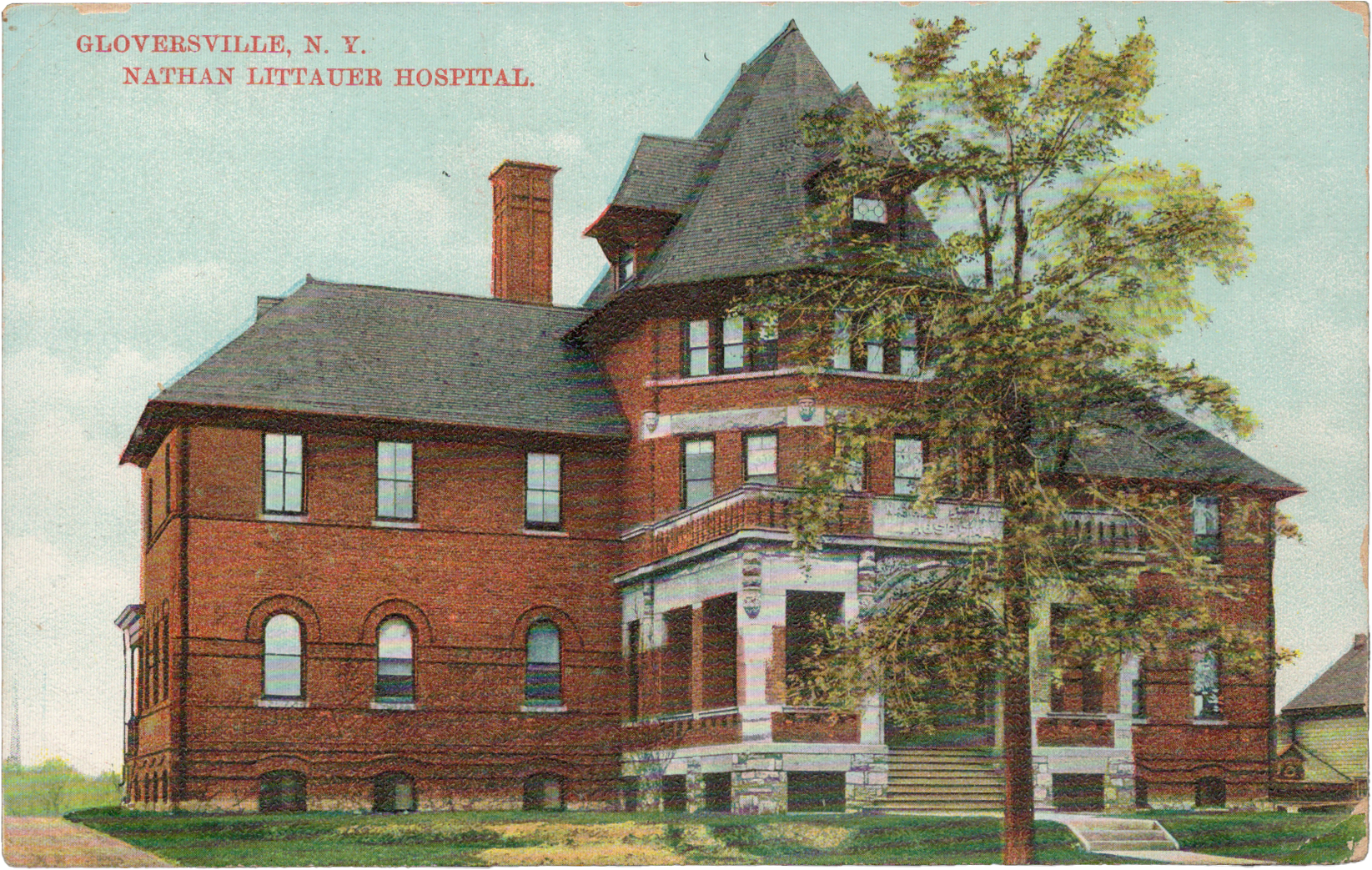Nathan Littauer Hospital
Gloversville, N. Y. Nathan Littauer Hospital. S. L. & Co. (S. Langsdorf & Co.) Made in Germany. Posted on 27 September 1910.
In 1891, following the death of his father, Nathan Littauer (1929–1891), a glovemaker from Breslau who had come to the United States in 1846 and created a glove mill in Gloversville, Lucius N. Littauer (1859–1944) agreed to provide roughly two thirds of the funds required to endow a hospital named for his late father. When it officially opened on 30 May 1894, it had 25 beds and a staff of eleven. Also attached was a nursing school. Brothers Lucius and Eugene Littauer (1861–1929) subsequently turned their father’s business into one of the largest glove-making enterprises in the United States (it eventually closed on the eve of the Great Depression). This allowed Lucius Littauer, alongside his commercial and political activities—a staunchly pro-tariff Republican, he was a member of the House of Representatives from 1896 to 1907—to engage in substantial philanthropy, especially after the death of his (non-Jewish) wife, Flora Mathilda Littauer, née Crawford (1850–1924). Best-known are his endowments of the Littauer professorship of Hebrew Literature and Philosophy, created in 1925 and initially held for the best part of half a century by the legendary Harry Austryn Wolfson (1887–1974), and the Graduate School of Public Administration at his alma mater. He also funded an extension of the Nathan Littauer Hospital in honour of his late wife, increasing its capacity by an additional 100 beds. Following the death of his brother Eugene Littauer in 1929, he established the Littauer Foundation. Perpetually bursting at the seams, the original hospital (including its various extensions) was eventually demolished, and new premises opened on the site in 1968. The nursing school closed the following year.
Sigmund Langsdorf (1846–1926), who originally came from the Hessian village of Battenfeld (located 70 km southwest of Kassel and 25 km northwest of Marburg), settled in New York in 1863 and gradually worked his way up (according to the city directory) from tobacco wholesaler to frames and novelties to fancy goods manufacturer and eventually ran one of the country’s largest postcards businesses. One of its particular successes were the alligator border postcards that featured a passepartout made up of three alligators. The design was developed by the Frankfurt-based business Adolf A. Rosenblatt, initially created and run by Adolf A. (dates unclear) and Isaac Rosenblatt (1861–1935) and taken over, in 1904, by brothers Sally (Salomon) Jacob (b. 1862) and Ignatz Jacob Jandorf (1863–1931), who had previously run a competing enterprise in Oberursel (just ten km northwest of Frankfurt). The close collaboration with Langsdorf (and likely other US enterprises too) offered a promising new avenue as the German and European markets became increasingly cut-throat, but it was made unsustainable by the enactment of the Tariff Law of 1909 in the United States, and Adolf A. Rosenblatt folded soon after. Given that this postcard was already in circulation in 1910, it may well have been manufactured by Adolf A. Rosenblatt.

